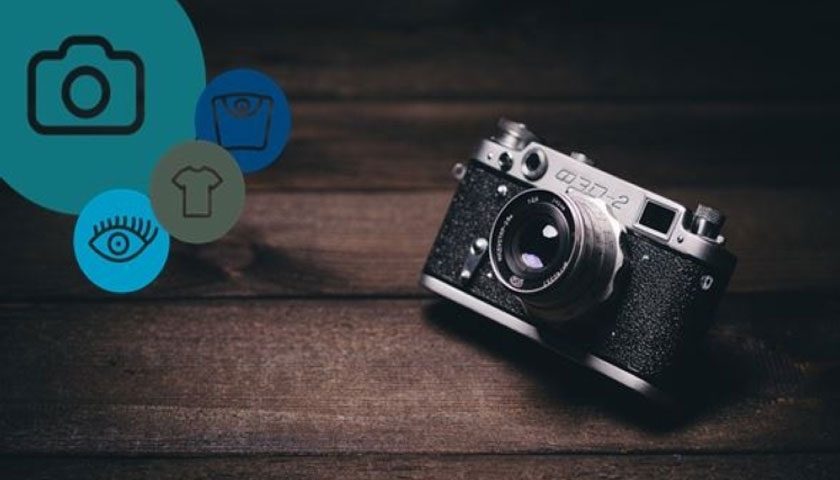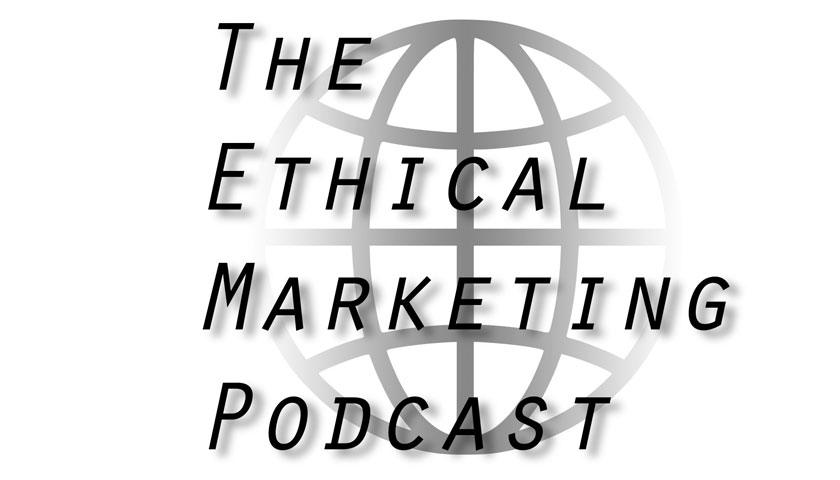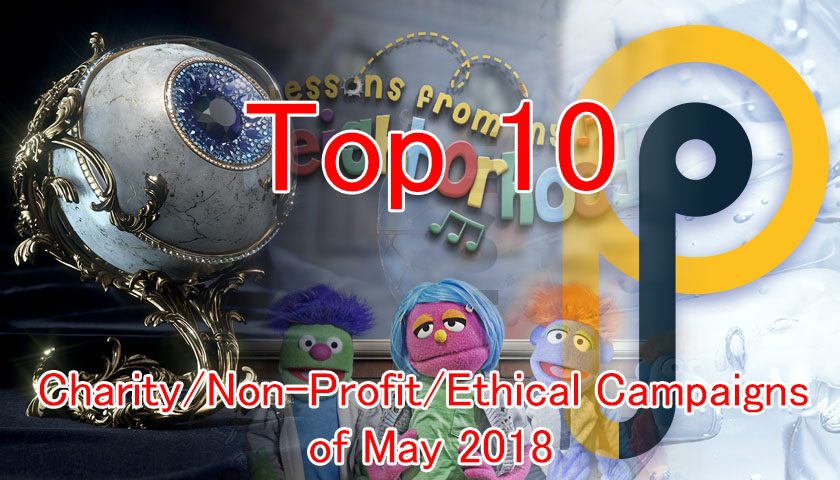Interestingly one of the things that matters a lot in marketing, and the media in general is the use of images. The use of certain images can help influence how you view advertising or marketing, and in these times of cried of fake media, how you see news too.
This week a new report by Picasso Labs looked at how the media has used imagery to portray President Trump. This isn’t strictly speaking ethical marketing but it is something which in some ways affects everyone, and how the imagery is used and pperceived is an interesting lesson for those with an interest in ethical marketing. As this wasn’t strictly speaking an ethical news issue or related to an ethical campaign I didn’t want to cover it, but I think it is worth reading about how imagery is used so I decided to put it into my blog.
The findings of the report by Picasso Labs are as follows, from this page on their site, thanks to Picasso Labs and what is below is (c) Picasso Labs:
President Trump In Imagery – Is there a bias?
Our methodology was simple. We did a cross-comparison analysis of 5,000+ images containing President Trump from 12 U.S. online news sources, covering conservative, moderate, and liberal media based on a Pew Research Center study [1] of political polarization and media habits of the American news audience.
Here are the media outlets we studied from August 2016 to March 2017:

We hypothesized that to inform public opinion, outlets would portray President Trump as follows:
- Angry – The liberal outlets would use imagery of President Trump looking angry to portray frustration and a lack of accomplishment.
- Happy – Conservative outlets would visualize him happier to reinforce that everything is going well.
- Crowds – Conservative outlets would show President Trump surrounded by crowds as a “man of the people.”
- Alone – Liberal outlets would show him isolated as a “man with no allies.”
- With Family – Conservative outlets show family to increase perception of family-friendly side.
- Without Family – Liberal outlets show to decrease perception of family friendly side and illustrate selfishness.
- With Soldiers + Flags – Conservative outlets would lean on imagery with President Trump amidst a backdrop of flags or surrounded by men and women in uniform to show patriotism.
- Oval Office – Conservative media would promote more “presidential” and “in command” portrayals of President Trump by having imagery of him sitting in the oval office.
After we formed our hypotheses, we used our AI to analyze the imagery, and eight independent human reviewers to ensure accurate image classification. Images were classified according to the type of facial expression (angry, happy, or neutral), as well as the categories seen below:

As can be seen in the graph below, President Trump only and President Trump with the American flag were the two most used pieces of imagery by a wide margin. The New York Times had the most even image distribution of all the outlets analyzed.
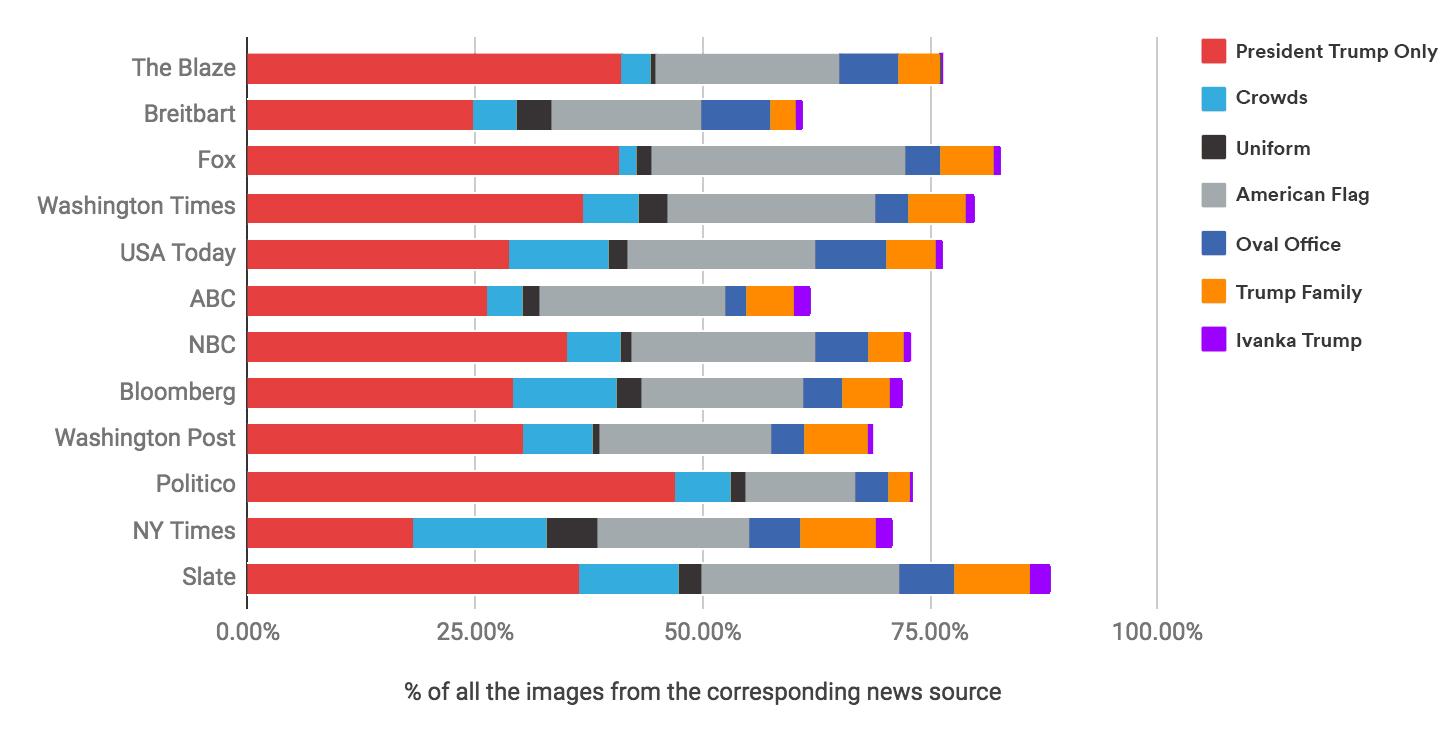
There were some surprising results that can be seen in this visualization as well:
- Both liberal and moderate media used imagery of President Trump surrounded by crowds with much greater frequency than the conservative media.
- We assumed that conservative media would be more likely to use imagery of Trump’s family and lean especially heavy on imagery with Ivanka Trump to show strong, healthy family ties. However, results proved the opposite. Liberal media used imagery of Trump’s family more frequently than conservative media. *Note: This may indicate that liberal outlets intended to highlight the president’s nepotistic dealings.*
- Similarly, we assumed that both conservative and moderate media would feature President Trump with service men and women more frequently than the liberal media, but found the opposite to be true.
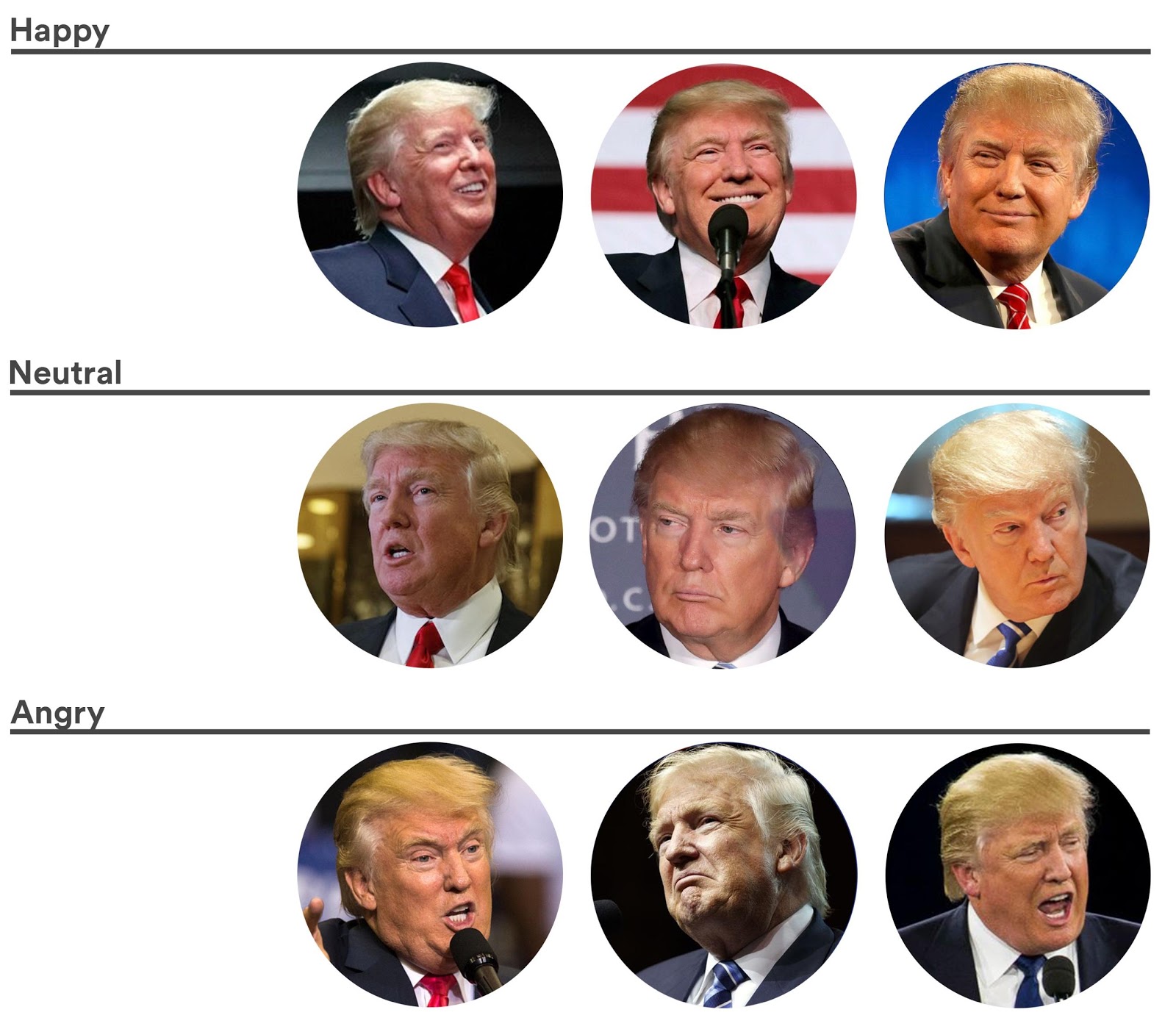
The results of facial analysis were equally if not more surprising. Liberal sources used imagery of President Trump looking happy with slightly greater frequency than other media sources, and there was no statistically significant difference between the frequency of his facial expression and political leaning of the media.
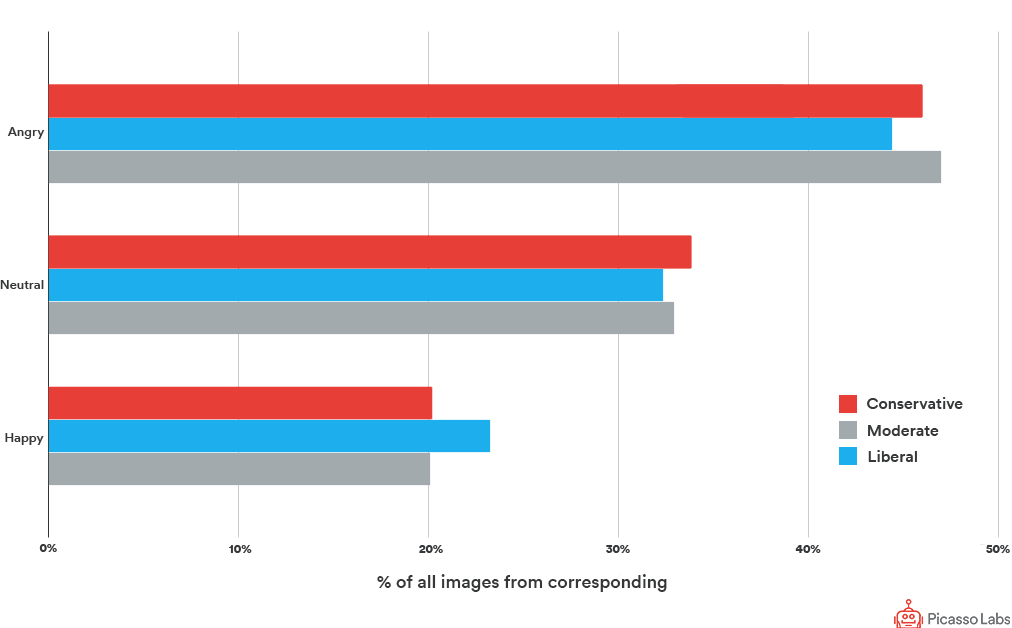
While the accusations alleging that journalists have biased points of view may or may not be true, the imagery used in their pieces has yet to be used as a way to sway or manipulate the public’s opinion. Based on our comprehensive visual analysis, we found there to be much more consistency between conservative and liberal media than what we initially expected.
[1] MITCHELL, A., GOTTFRIED, J., KILEY, J. & MATSA, K. E. 2014. Political polarization & media habits. Pew Research Center.
My thoughts
Why I wanted to post this is that I found it very interesting in that both the left and the right feel that the other side is manipulating to put their side across, and that is undoubtedly so at times with their use of lasnguage, but I found it interesting that both sides are being fair in their use of imagery.
Links
https://www.picassolabs.com/trump

